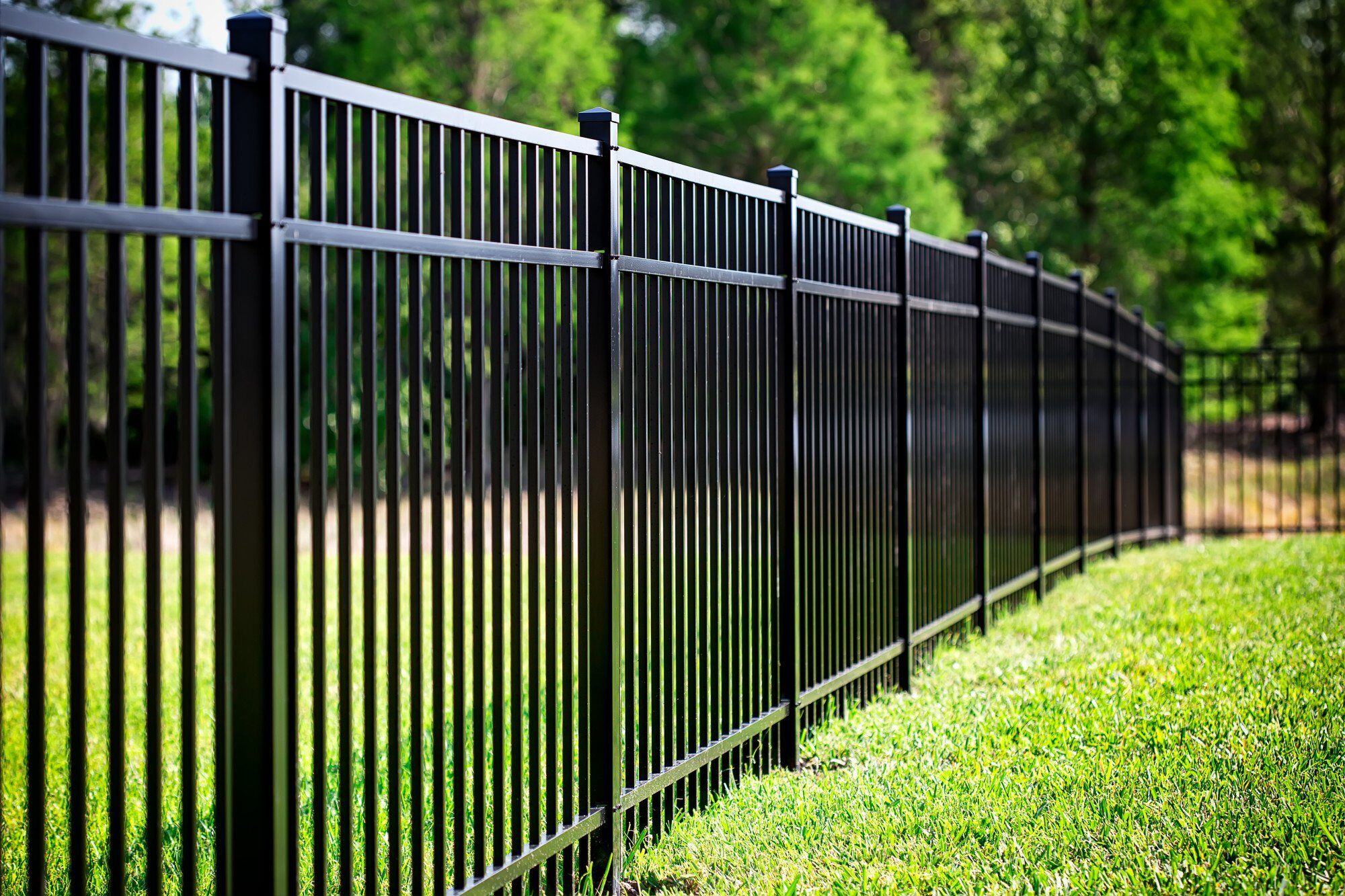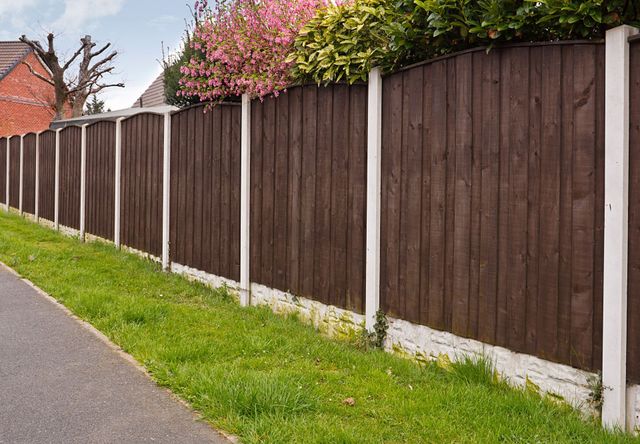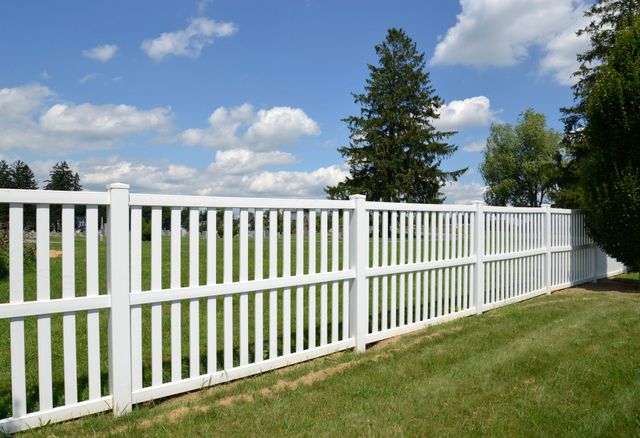All Categories
Featured

When it pertains to selecting the ideal fencing material for your property, light weight aluminum, timber, and plastic are among the most popular choices. Each product supplies special benefits that fit various needs, preferences, and budget plans. Recognizing the benefits and drawbacks of each kind can help you make an educated decision based on your top priorities, whether that's visual charm, sturdiness, or upkeep demands. Listed below, we damage down the benefits and downsides of these three usual fence products.
Wood Fencing. Pros:
Aesthetic Allure: Timber fences offer a natural, classic appearance that enhances most kinds of landscape design and architecture. They can be conveniently tailored with paint or discolor, giving you the liberty to produce the ideal shade and finish for your property. Flexibility: Timber can be used to produce a variety of fencing designs, from standard picket fencings to much more contemporary designs like privacy fencings or rustic ranch-style fences. It's very easy to add or modify to over time if your requirements change. Price: Wood is usually extra budget-friendly than vinyl or aluminum, making it an appealing selection for house owners on a budget plan. The initial expense of a wood fencing is usually less than the other materials. Cons:

Maintenance Demands: Timber fencings call for normal maintenance, including staining, securing, or paint to shield them from weathering, rot, and pest damages. Without proper care, timber can deteriorate rapidly. Sturdiness: Wood is susceptible to damage from parasites like termites, and it can warp, crack, or split in time due to exposure to the aspects. In areas with extreme climate condition, timber may need to be replaced more regularly than other materials. Restricted Life-span: While wood fences can last for lots of years with correct care, they generally have a shorter life expectancy than plastic or aluminum fences. Vinyl Secure fencing. Pros:
Low Maintenance: One of the most significant benefits of vinyl fence is its reduced maintenance requirements. Unlike wood, vinyl doesn't require to be repainted, tarnished, or sealed. It's resistant to fading, breaking, or bending, making it optimal for home owners that want a problem-free fencing. Durability: Plastic fences are resistant and highly sturdy to the components, consisting of UV rays, rain, and humidity. They're also impervious to parasites, such as termites, that can harm wood fencings. Variety of Styles: Plastic fences come in a large range of colors and designs, and numerous resemble the appearance of wood without the maintenance disadvantages. You can select from privacy fencings, picket fencings, and even more to match your requirements. Lengthy Lifespan: With proper care, plastic fencings can last years, far longer than timber fences, and they include warranties that provide comfort. Cons:
Higher Preliminary Expense: While plastic fencings can save cash on maintenance over the years, they tend to have a higher in advance price than wood fencings, which may be a deterrent for some buyers. Minimal Modification: While plastic fencings are offered in a selection of colors and designs, they lack the customization adaptability that wood gives. You're limited to the pre-designed panels readily available, which could not match every one-of-a-kind aesthetic. Potential for Breaking in Cold Climates: In extreme chilly temperatures, plastic fencings can end up being fragile and may crack under impact, making them less suitable for areas with freezing wintertimes. Light weight aluminum Secure fencing. Pros:
Toughness and Strength: Light weight aluminum is a lightweight yet solid product that stands up to rust and rust, making it ideal for seaside locations or areas with high humidity. Light weight aluminum fences call for minimal maintenance and can withstand the aspects for several years. Aesthetic Allure: Light weight aluminum fencings offer a smooth, contemporary look. They come in a selection of attractive designs and can be used to develop a more modern or elegant look for your residential property. Low Maintenance: Aluminum fencings do not need paint or sealing, and they're immune to rust and corrosion, making them unbelievably low maintenance in time. Security: Aluminum fences provide a higher degree of safety contrasted to vinyl or timber fencings since of their tough building and construction. They can be outfitted with gateways and locks to supply a secure border around your residential property. Disadvantages:

Cost: Light weight aluminum fences are often a lot more pricey than wood or plastic fences, both in regards to products and installment costs. This higher cost point can be a drawback for budget-conscious house owners. Much Less Personal privacy: Aluminum fencings typically have an even more open design, with pickets spaced apart to allow exposure with the fence. If personal privacy is a priority, this might not be the best selection for your property. Prone to Denting: While light weight aluminum is rust-resistant, it can still be nicked or curved if struck with pressure, such as by an automobile or heavy equipment. While it will not corrosion, it may not retain its beautiful look if it gets damaged. Which Product is Right for You? Picking the best fence material depends on your details demands, budget plan, and long-term strategies for your home. On the various other hand, if you need a lasting, safe and secure fencing with a sleek look, light weight aluminum might be the ideal product for you.
Inevitably, consider your climate, maintenance choices, and visual desires when deciding on your fencing material. Each option has its toughness and weak points, yet with the appropriate treatment and setup, all 3 can offer eye-catching and reputable boundaries for your property.
Latest Posts
Reputable Industrial Roof Covering Services by Weathercraft
Published May 25, 25
1 min read
Uncover the Best Auto Repair Coupons in Montclare, Chicago
Published May 23, 25
1 min read
How to Know When Your Car Needs Skilled Car Repair at Montclare Auto Repair
Published May 23, 25
1 min read